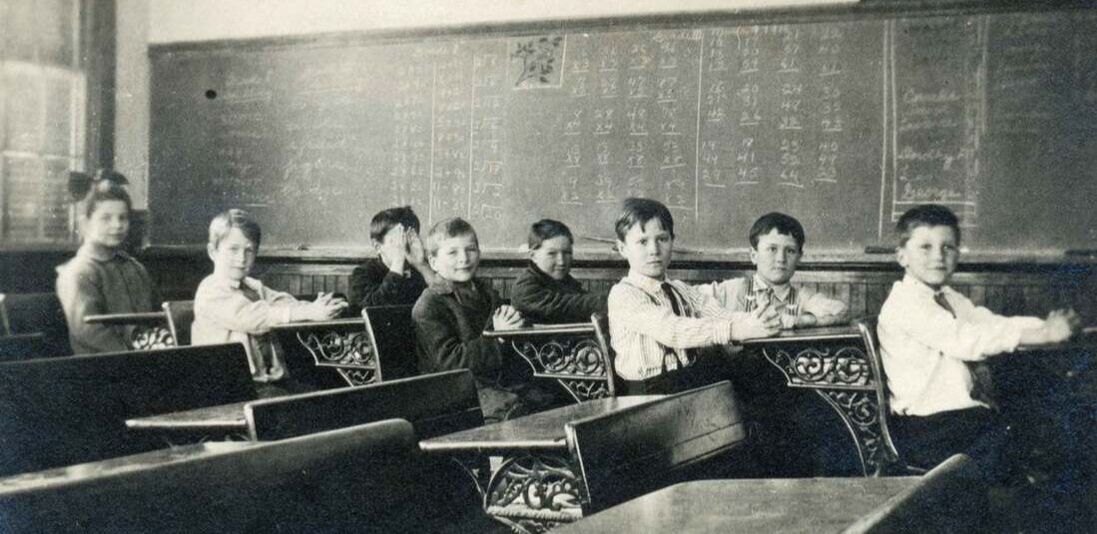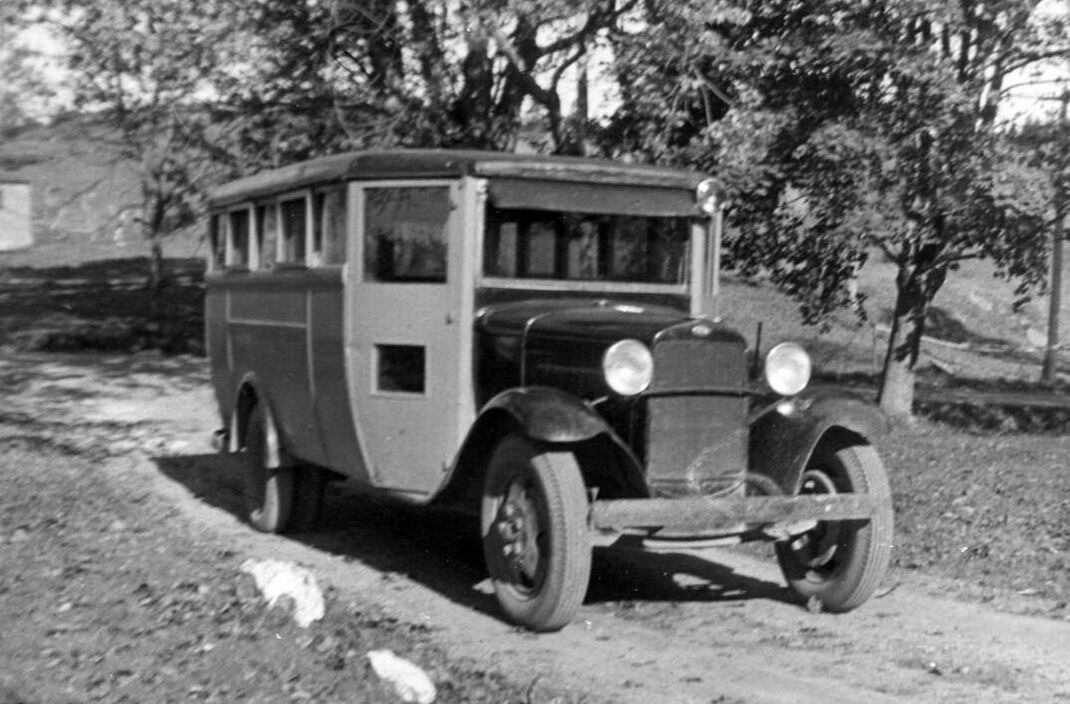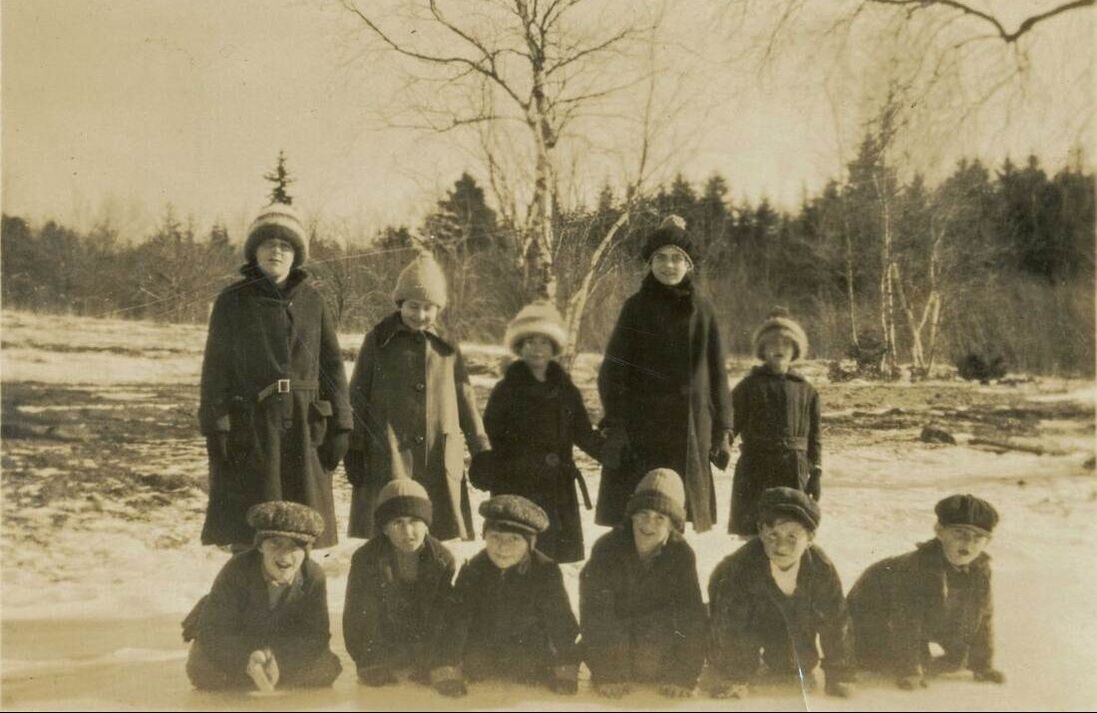ISLAND SCHOOLS
Let us make our school rooms and surroundings as homelike and attractive as possible, put in the best teachers to be secured, and give our pupils as much schooling as is profitable.
Fremont Beverage, Superintendent of Schools, North Haven Town Report, 1909
When residents of North Haven gathered at the first Town Meeting in 1790, they agreed to hire the island’s first teacher, thus beginning a tradition of community schooling on the island. At the time, Maine was a part of Massachusetts, where a law mandated in 1647 that towns with fifty families or more must hire a schoolteacher. By 1800, North Haven had four schoolhouses in locations spread across the island. In 1845, North Haven residents established a fifth schoolhouse. The island’s schools were numbered one through five and named North, East, South, West, and Middle.
Just seven years later, in 1852, as the island’s population reached an all-time high of 1000 people, voters at Town Meeting agreed to create an additional school district by dividing the North and East districts, making six districts on North Haven. The peak student population was 403 in 1862, although not all school-age children attended school and actual enrollment tended to be lower.
While a Superintendent and School Committee oversaw funding for all the island’s schools, each district operated autonomously, with their own budget and teacher. Each district elected a school agent who supervised the teacher, oversaw repairs, provided supplies, and reported on enrollment.
Over the years the boundaries of the island’s districts were drawn and redrawn, especially as populations changed. Occasionally, families were “set off” from one district to another by action at Town Meeting. It is speculated that this occurred due to dissatisfaction with a teacher or school agent, difficulties with transportation, or overcrowding in a school.
Fremont Beverage, Superintendent of Schools, North Haven Town Report, 1909
When residents of North Haven gathered at the first Town Meeting in 1790, they agreed to hire the island’s first teacher, thus beginning a tradition of community schooling on the island. At the time, Maine was a part of Massachusetts, where a law mandated in 1647 that towns with fifty families or more must hire a schoolteacher. By 1800, North Haven had four schoolhouses in locations spread across the island. In 1845, North Haven residents established a fifth schoolhouse. The island’s schools were numbered one through five and named North, East, South, West, and Middle.
Just seven years later, in 1852, as the island’s population reached an all-time high of 1000 people, voters at Town Meeting agreed to create an additional school district by dividing the North and East districts, making six districts on North Haven. The peak student population was 403 in 1862, although not all school-age children attended school and actual enrollment tended to be lower.
While a Superintendent and School Committee oversaw funding for all the island’s schools, each district operated autonomously, with their own budget and teacher. Each district elected a school agent who supervised the teacher, oversaw repairs, provided supplies, and reported on enrollment.
Over the years the boundaries of the island’s districts were drawn and redrawn, especially as populations changed. Occasionally, families were “set off” from one district to another by action at Town Meeting. It is speculated that this occurred due to dissatisfaction with a teacher or school agent, difficulties with transportation, or overcrowding in a school.
WHY SO MANY DISTRICTS ON A SMALL ISLAND?
For generations, people on North Haven lived very locally, often working and doing business close to home. The island’s population clustered around the harbors and thoroughfares as travel by water was far easier than over land, with roads often impassable due to winter snowbanks and spring mud. When people did travel over land, it was on foot, and schools, as well as stores and other businesses, were located within walking distance. Even when automobiles came to the island in the early 1900s, not every family had a car and most children continued to walk to school. Prior to the first school bus, the town hired transportation for those children living farthest from the schools and all others were expected to walk.
Children today should appreciate cars and warm buses which permits them to reach school warm and dry in the winter time instead of with cold fingers and toes and possibly wet feet and legs, since slacks and ski suits were not known and there was no snow plow to clear the roads before school time.
Nettie Beverage Crockett recalling school in the early 1900s, Personal recollection, 1966
How we got to school, of course we walked. We didn’t seem to think that walk amounted to anything. You’d face it on a cold day just like you did on a rainy day -- you went! Our fathers and mothers -- at least mine did -- expected us to go.
Olive Stone Lermond, Interview with Eliot Beveridge, circa 1980
With schools spread across the island, it was possible for children growing up on opposite ends of North Haven to not meet one another until coming together for high school or when transferred from another island school.
I did not, and you won’t believe this, but I did not know the children in the village. In, I think, ’42 they moved our grades, which were first and second grades down to the village school and I knew none of the children that were there, including two cousins.
Betty Brown, “WE BELONG HERE : STORIES FROM NORTH HAVEN” oral history project, 2018
By 1893, the state of Maine discontinued the organization of multiple districts and the island schools became known as Common Schools. In 1918, North Haven joined a school union with Vinalhaven, Swans Island, and Frenchboro, with the intention of employing a professional Superintendent. The school union remained until 1959 when North Haven became established as Maine’s School Administrative District No. 7, managed by a board of directors elected by residents.
For generations, people on North Haven lived very locally, often working and doing business close to home. The island’s population clustered around the harbors and thoroughfares as travel by water was far easier than over land, with roads often impassable due to winter snowbanks and spring mud. When people did travel over land, it was on foot, and schools, as well as stores and other businesses, were located within walking distance. Even when automobiles came to the island in the early 1900s, not every family had a car and most children continued to walk to school. Prior to the first school bus, the town hired transportation for those children living farthest from the schools and all others were expected to walk.
Children today should appreciate cars and warm buses which permits them to reach school warm and dry in the winter time instead of with cold fingers and toes and possibly wet feet and legs, since slacks and ski suits were not known and there was no snow plow to clear the roads before school time.
Nettie Beverage Crockett recalling school in the early 1900s, Personal recollection, 1966
How we got to school, of course we walked. We didn’t seem to think that walk amounted to anything. You’d face it on a cold day just like you did on a rainy day -- you went! Our fathers and mothers -- at least mine did -- expected us to go.
Olive Stone Lermond, Interview with Eliot Beveridge, circa 1980
With schools spread across the island, it was possible for children growing up on opposite ends of North Haven to not meet one another until coming together for high school or when transferred from another island school.
I did not, and you won’t believe this, but I did not know the children in the village. In, I think, ’42 they moved our grades, which were first and second grades down to the village school and I knew none of the children that were there, including two cousins.
Betty Brown, “WE BELONG HERE : STORIES FROM NORTH HAVEN” oral history project, 2018
By 1893, the state of Maine discontinued the organization of multiple districts and the island schools became known as Common Schools. In 1918, North Haven joined a school union with Vinalhaven, Swans Island, and Frenchboro, with the intention of employing a professional Superintendent. The school union remained until 1959 when North Haven became established as Maine’s School Administrative District No. 7, managed by a board of directors elected by residents.
FOR DESCRIPTIONS OF EACH ISLAND SCHOOL, SELECT ANY OF THE LINKS BELOW



